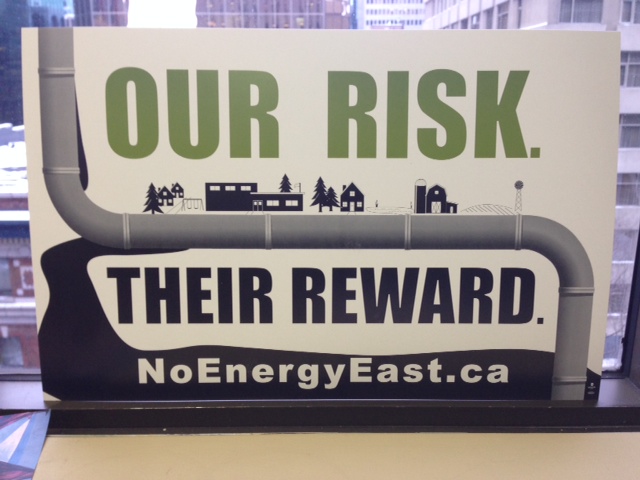When TransCanada first announced the Energy East pipeline a number of voices emerged trumpeting its benefits. Premier Redford called the project “nation-building.” In announcing the project, TransCanada’s CEO Russ Girling described the pipeline as “an historic opportunity to connect the oil resources of western Canada to the consumers of eastern Canada, creating jobs, tax revenue and energy security for all Canadians for decades to come.” And let’s not forget PM Harper — never one to speak ill of a tar sands pipeline or project — he quickly responded in Saint John, New Brunswick, “We’re not just expanding our markets for our energy projects … We are also at the same time making sure that Canadians themselves benefit from those projects and from that gain energy security.”
Sounds pretty great, eh? It’s time to separate fact from fiction.
The Council of Canadians partnered with Environmental Defence, Equiterre and the Ecology Action Centre in the release of a new report, TransCanada’s Energy East: An Export Pipeline, NOT for Domestic Gain.
Using public information, the report estimates 750,000 to 1 million barrels per day (bpd) pipeline would likely be shipped unrefined to international markets.
How did we get these numbers?
There are 3 refineries along the Energy East route that have a total capacity of processing 672,000 bpd. What we discovered is that most of this total capacity is already spoken for by two other sources, U.S. crude and crude from Atlantic Canada, with a major third source on its way with the approval of Enbridge’s Line 9. The range accounts for the extent to which you foresee cheap U.S. crude being used in Eastern refineries.
And hey, if you don’t believe us, check out what Enbridge recently said (the irony, I know): “[After Line 9] any other project would have to be for markets beyond Quebec.” Enbridge Strategic Advisor Stephen Wuori (source). The Globe and Mail further reports, “Enbridge argues that the Quebec market will have access to nearly all the North American crude it needs as a result of Enbridge’s planned reversal of the Line 9 pipeline, which would carry western crude through Ontario to Montreal.”
To put this in perspective, the pipeline would ship a total of 1.1 million barrels per day. The lion share of the crude is for export.
It puts into dispute all claims that this project will enhance energy security for the Atlantic region and support Eastern refineries.
And this is not to suggest TransCanada has denied there will be exports. TransCanada and Irving have openly discussed using Energy East to access overseas markets. What has been slipped under the rug is the extent to which this pipeline is for exports versus domestic use.
It has been a convenient way to sell what should be an unpopular project. After all this would be the largest oil pipeline in North America. It would:
– Ship diluted bitumen produced in the tar sands. A spill would have devastating environmental impacts that are nearly impossible to clean up as seen with the Enbridge pipeline spill in Kalamazoo, Michigan. The pipeline would cross at least 90 watersheds and 961 water courses along the route.
– Leave communities along the route dependent on TransCanada’s questionable pipeline safety track record (source; source)
– New export terminal in Cacouca threatens a Beluga whale habitat. A diluted bitumen spill from one of the massive new tankers to enter the St. Lawrence or Bay of Fundy could devastate local tourism and fishery industries.
– Result in more than 650,000 barrels per day of additional tar sands production, which means even more toxic exposure for downstream communities.
– Generate up to 32 million tonnes of carbon emissions each year — equivalent to the annual emissions of all the cars in Ontario or more than any one Atlantic province.
The Council of Canadians opposes the Energy East pipeline. For information on our April 7-28 tour to six communities in Ontario to strengthen community opposition to this pipeline, please click here.




